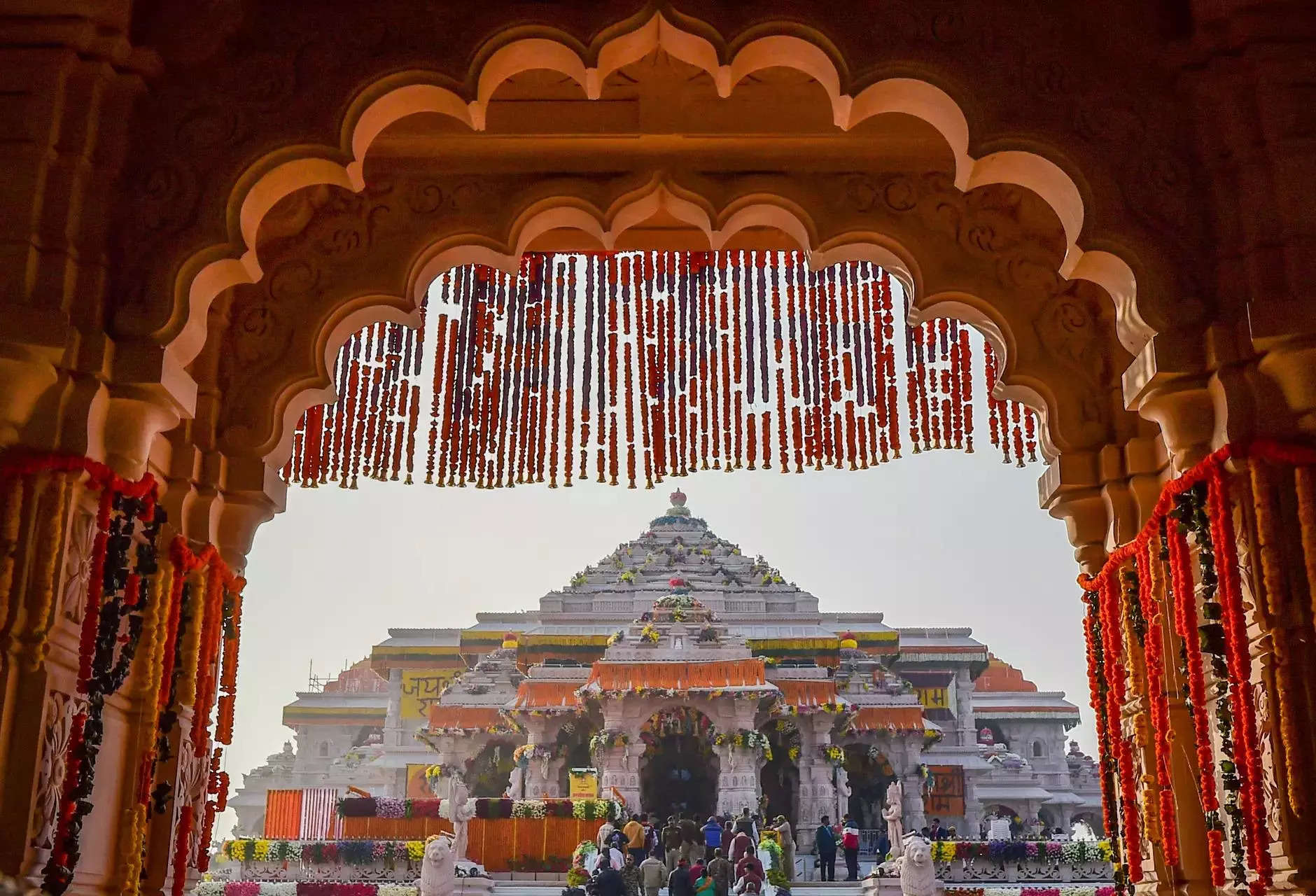Priests at Ayodhya ’s Ram Temple have adopted a new dress code, transitioning to bright yellow attire. The Shri Ram Janmabhoomi Teerth Kshetra , which oversees the temple, has introduced yellow safas (headgear), chaubandis (kurtas), and dhotis for the priests, replacing their traditional saffron robes.
Additionally, the trust has prohibited priests from bringing smartphones into the garbhagriha (sanctum sanctorum) and has established several new guidelines for the priests' conduct.
According to insiders, these changes aim to ensure uniformity among the priests and distinguish them from others within the temple premises.
“A new dress code has been implemented for the priests at the Ram Temple. Now the priests, including the chief priest, four assistant priests, and 20 trainee priests, will sport safa to be wrapped around the head, chaubandi (full-sleeve kurta), and dhoti, all in yellow colour,” stated Santosh Kumar Tiwari, assistant priest at the Ram Temple.
Previously, most priests wore saffron robes. “Some of the priests used to come in yellow attires, but it was not mandatory,” Tiwari added.
He further explained that, according to Sanatana Dharma, priests should wear clothes that are donned head and hands first, and the new dress code complies with this tradition.
The trust has also banned priests from carrying smartphones into the garbhagriha for security reasons, although sources suggest this decision follows a water leakage incident.
Water Seepage at Ram Temple
Recently, Acharya Satyendra Das, the head priest of the Ram Mandir, reported that monsoon rains had caused water leakage in the garbhagriha. “With the first rains, water leakage has started in the temple where Ram Lalla is seated and the areas near it. Water has collected inside. It must be found out what is lacking in the construction in the part of the temple already built. What is causing the water leakage?” Das stated.
Nripendra Misra, chairperson of the Ram Mandir management trust, conducted an inspection and asserted that the temple's construction was sound, noting that rainwater had entered through pipes installed for electric wiring.
On June 26, the Ram Temple trust claimed that “not a single drop of water” had entered the sanctum sanctorum where the idol of Lord Ram is kept.
Despite this, some images reportedly showing water leakage in the sanctum sanctorum have surfaced from within the temple complex.
Other new rules include setting five-hour shifts for the priests. According to sources, the new guidelines stipulate that the chief priest will be assisted by four assistant priests, each of whom will, in turn, be aided by five trainee priests. Their shifts will start at 3:30 PM and end at 11 PM.
Additionally, the trust has prohibited priests from bringing smartphones into the garbhagriha (sanctum sanctorum) and has established several new guidelines for the priests' conduct.
According to insiders, these changes aim to ensure uniformity among the priests and distinguish them from others within the temple premises.
“A new dress code has been implemented for the priests at the Ram Temple. Now the priests, including the chief priest, four assistant priests, and 20 trainee priests, will sport safa to be wrapped around the head, chaubandi (full-sleeve kurta), and dhoti, all in yellow colour,” stated Santosh Kumar Tiwari, assistant priest at the Ram Temple.
Previously, most priests wore saffron robes. “Some of the priests used to come in yellow attires, but it was not mandatory,” Tiwari added.
He further explained that, according to Sanatana Dharma, priests should wear clothes that are donned head and hands first, and the new dress code complies with this tradition.
The trust has also banned priests from carrying smartphones into the garbhagriha for security reasons, although sources suggest this decision follows a water leakage incident.
Water Seepage at Ram Temple
Recently, Acharya Satyendra Das, the head priest of the Ram Mandir, reported that monsoon rains had caused water leakage in the garbhagriha. “With the first rains, water leakage has started in the temple where Ram Lalla is seated and the areas near it. Water has collected inside. It must be found out what is lacking in the construction in the part of the temple already built. What is causing the water leakage?” Das stated.
Nripendra Misra, chairperson of the Ram Mandir management trust, conducted an inspection and asserted that the temple's construction was sound, noting that rainwater had entered through pipes installed for electric wiring.
On June 26, the Ram Temple trust claimed that “not a single drop of water” had entered the sanctum sanctorum where the idol of Lord Ram is kept.
Despite this, some images reportedly showing water leakage in the sanctum sanctorum have surfaced from within the temple complex.
Other new rules include setting five-hour shifts for the priests. According to sources, the new guidelines stipulate that the chief priest will be assisted by four assistant priests, each of whom will, in turn, be aided by five trainee priests. Their shifts will start at 3:30 PM and end at 11 PM.








